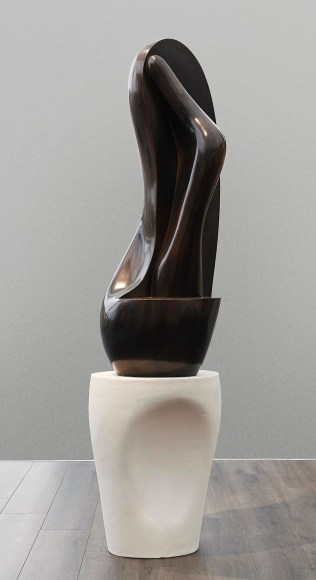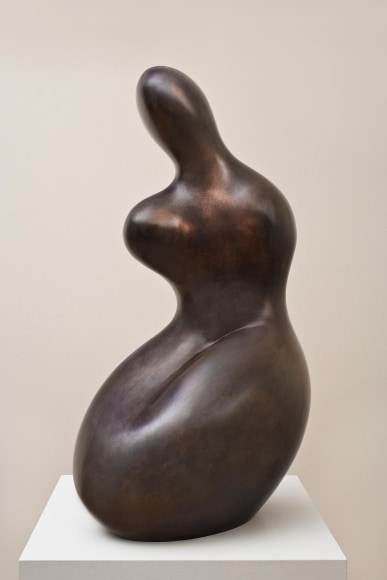
Jean (Hans) Arp
Jean Arp was one of the most influential artists of the early 20th century, with contributions that were crucial not only to the inception of the Dada movement but also to the realms of Surrealism and Constructivism.
Biography of Jean Arp
Jean Arp was born in 1886 in Strasbourg, the capital of the Alsace-Champagne-Ardenne-Lorraine region in northeastern France. His mother was French, and his father of German origin, leading to uncertainty about his name—whether it should be Jean or Hans. This matter was resolved by French law after World War I, officially establishing his true name as Jean.
In his teenage years, Arp moved to Paris and published his poetry for the first time in 1904, marking his entrance into the creative scene of the City of Lights. He spent the next three years studying at the Kunstschule in Weimar before returning to Paris in 1908, where he continued his studies at the renowned Académie Julian.
While in Paris, Arp was a founder and member of the Moderne Bund in Lucerne, a group of young avant-garde artists that exhibited occasionally from 1911 to 1913. During this period, he encountered Wassily Kandinsky, the painter and art theorist whose ideas greatly influenced Arp's artistic direction. Through his friendship with Kandinsky, Arp also became acquainted with Henri Matisse and Robert Delaunay. In 1913, amidst escalating tensions in Europe, the artist moved to Switzerland to take advantage of the country's neutrality—a decision that proved prescient when World War I broke out in 1914.
After arriving in Switzerland, Arp joined a community of like-minded individuals who shared his avant-garde artistic outlook. In 1916, he became one of the founding members of the Dada movement in Zürich, choosing to use his alternative name, Hans, during this period. Alongside Max Ernst and social activist Alfred Grünwald, Arp established the Cologne Dada group. While not as prominent as its Zürich counterpart, this group still wielded significant influence. The artist played a pivotal role in Europe's first radical and genuine avant-garde movement, exploring Dadaistic concepts.
In 1925, Arp furthered his involvement in the modern art phenomenon by participating in the first exhibition of the surrealist group at the Galérie Pierre in Paris. Encouraged by the recognition he received from Surrealist artists, Arp relocated to the Paris suburb of Meudon the following year.
In 1931, Arp decided to sever ties with the Surrealist movement and founded the Paris-based group Abstraction-Création. During this period, he extended his artistic repertoire from collages and reliefs to encompass bronze and stone sculptures. Arp's innovative mindset gave rise to the creation of small works consisting of multiple elements that viewers could pick up, separate, and rearrange into new configurations.
Throughout the 1930s, the artist continued to write and publish essays and poetry, a practice he maintained for the rest of his life. In 1949, he expanded his reach across the Atlantic with a solo exhibition at the Buchholz Gallery in New York City. Jean Arp received numerous awards during this mature phase of his career, including the Grand Prize for sculpture at the 1954 Venice Biennale and the 1963 Grand Prix National des Arts.
The artist passed away in 1966 in Basel, Switzerland, leaving behind an impressive body of artwork and a lasting legacy that continues to influence modern art.
Jean Arp's Art Style
Whether crafting sculptures or collages, penning poems, engaging in discussions about creative theories, or simply sketching random forms on a piece of paper, each of Jean Arp's works bore the hallmark of originality and modern creativity.
Through his paintings, reliefs, and sculptures, Arp introduced numerous groundbreaking ideas, notably incorporating discarded materials and spontaneity as integral elements of the artistic process. Furthermore, he explored the possibilities arising from the serendipitous arrangements of elements within a piece's structure, giving rise to his renowned biomorphic sculptures.
Despite their heavily abstract nature, the artist's biomorphic sculptures drew inspiration from organic materials and the human figure, creating a unique fusion that imbued Arp's art with a profound connection to the concepts of transformation, growth, and metamorphosis.
Years:
Born in 1886
Country:
France, Strasbourg
Gallery:
Galerie Thomas
Landau Fine Art
ACQUAVELLA
Luxembourg + Co.
Mitchell-Innes & Nash
Galerie Knoell
Vedovi Gallery
Gagosian



